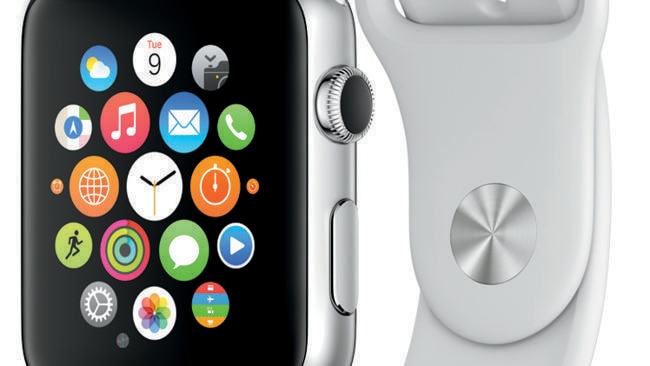A timely warning about Apple Watch’s popularity
DESPITE the hype around Apple’s impending smartwatch launch today, one in four Australians have never heard of it.

DESPITE the hype around Apple’s impending smartwatch launch today, one in four Australians have never heard of it while others who intend to purchase one don’t even know why.
A survey by consumer insights firm Pureprofile has found that only 4.2 per cent of adults intend to buy the Apple Watch now, with most interest coming from Gen Y and Gen X age brackets.
The survey of 1501 Australians found that 14 per cent of those who are buying or considering buying the Apple Watch are not sure why they want it.
And an overwhelming majority of those surveyed — 76 per cent — don’t think smart watches will render conventional wristwatches obsolete in the near future. Some 66 per cent of people currently wear a watch.
Apple Watch: everything you need to know
The good news for Apple is that many more — another 18.9 per cent — say that over time they would consider buying an Apple Watch, which amounts to millions of potential sales.
“The first 4 per cent are the early adopters and Apple diehard enthusiasts that are happy to buy the Apple Watch unseen,” said Paul Chan, founder and chief executive of Pureprofile.
“The next segment of people, the fence-sitters, are the ones who will be swayed by other factors: being able to see and touch it in person; having a friend that owns one; and seeing online reviews and media coverage.
“Even seeing the long line of people waiting to buy one at the Apple Store or hearing that the first batch of Apple Watches have sold out could be enough to get these guys over the line.”
Three versions of Apple Watch are set to sell: the stainless steel Watch, the anodised aluminium Watch Sport and the premium 18-carat gold Watch Edition.
Their release comes as Apple’s fortunes are riding high.
Strategy Analytics says that in the fourth quarter last year, Apple captured 89 per cent of smartphone profits and Android just 11 per cent; Android sales are hampered by tiny profit margins.
While millions of Apple Watches are predicted to be sold, only 720,000 Android watches sold last year, according to research film Canalys.
Having worn smartwatches for a long time, it’s obvious what they can and can’t do well. Passive operation, where they bring information to you with minimal input, is where they excel. There’s information screening, notifications of calls, SMS messages, emails and apps — known as Glances on Apple Watch. You decide whether to follow up.
There’s the obvious activity and fitness monitoring, the ability to store and play music on a watch when training without needing a smartphone, mobile payments, and apps where hands-free use is valuable. At home, internet-connected lighting and climate control can be tweaked with a watch. You could use it to open your garage door.
Both Apple and Android watches will make it possible for you to unlock your phone through your watch and, provided the watch stays on your hand, not to have to unlock it again. Apps that require you to input loads of information through your watch are less useful; this is more easily done with a phone. Rarely have I bothered making voice calls or dictating messages through a watch.
Today’s launch shows that Apple’s Watch centres on apps and industry partners: BMW, Honeywell, American Airlines, Starwood Hotels and Lutron are among them.
Well-produced apps made the original iPhone a runaway success in 2007 and will do it again with Apple Watch.
Apple Watch faces its own hurdles: questions about battery life, not being waterproof — an issue for sportspeople — and, like other smart watches, the accuracy of its optical heart rate monitor.



To join the conversation, please log in. Don't have an account? Register
Join the conversation, you are commenting as Logout